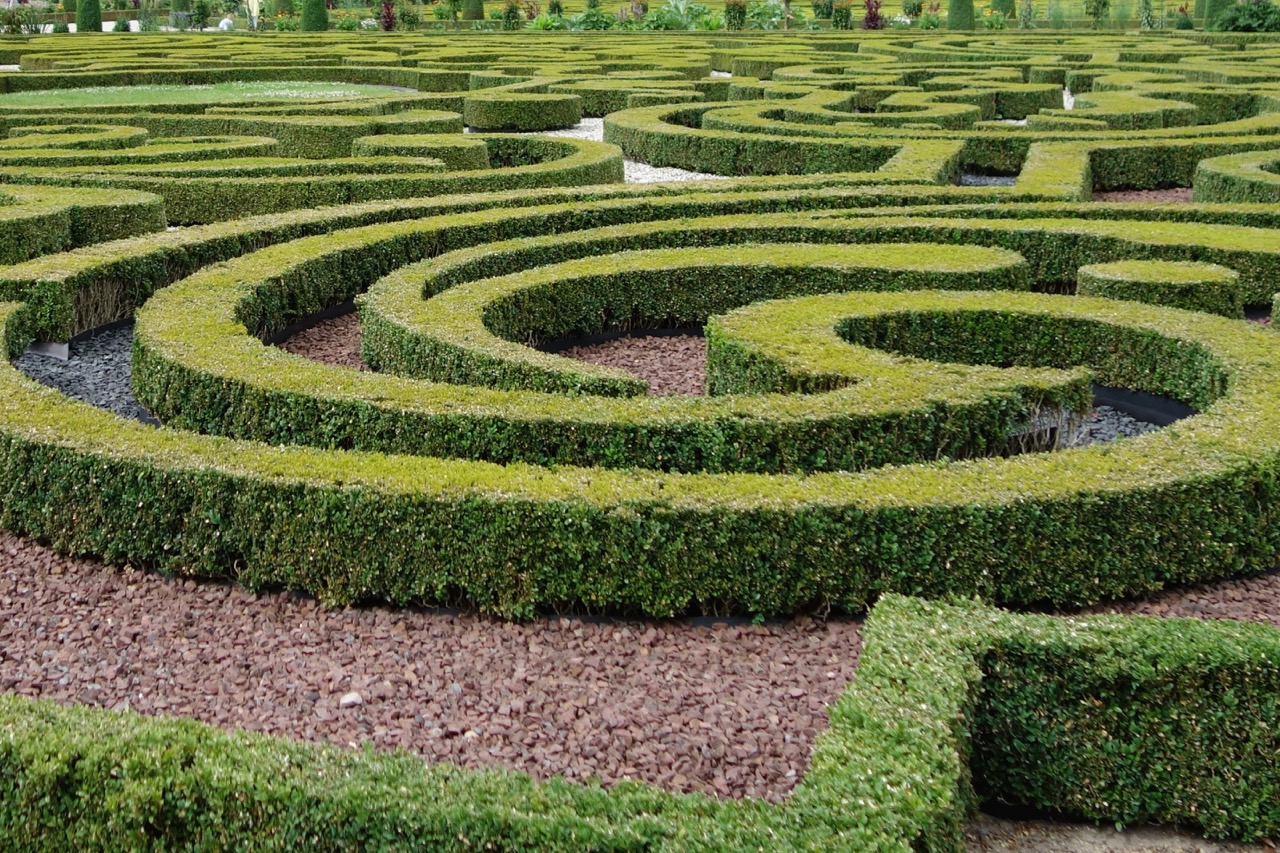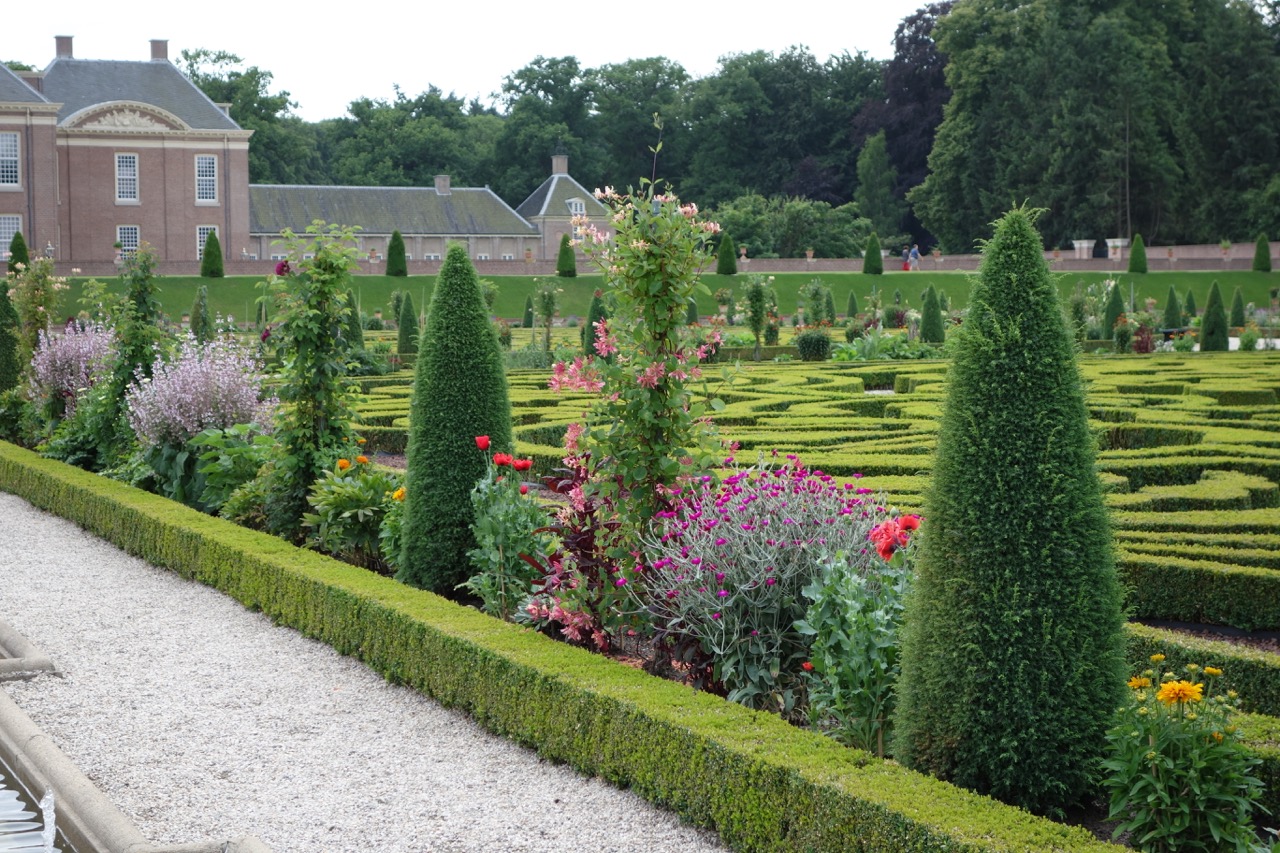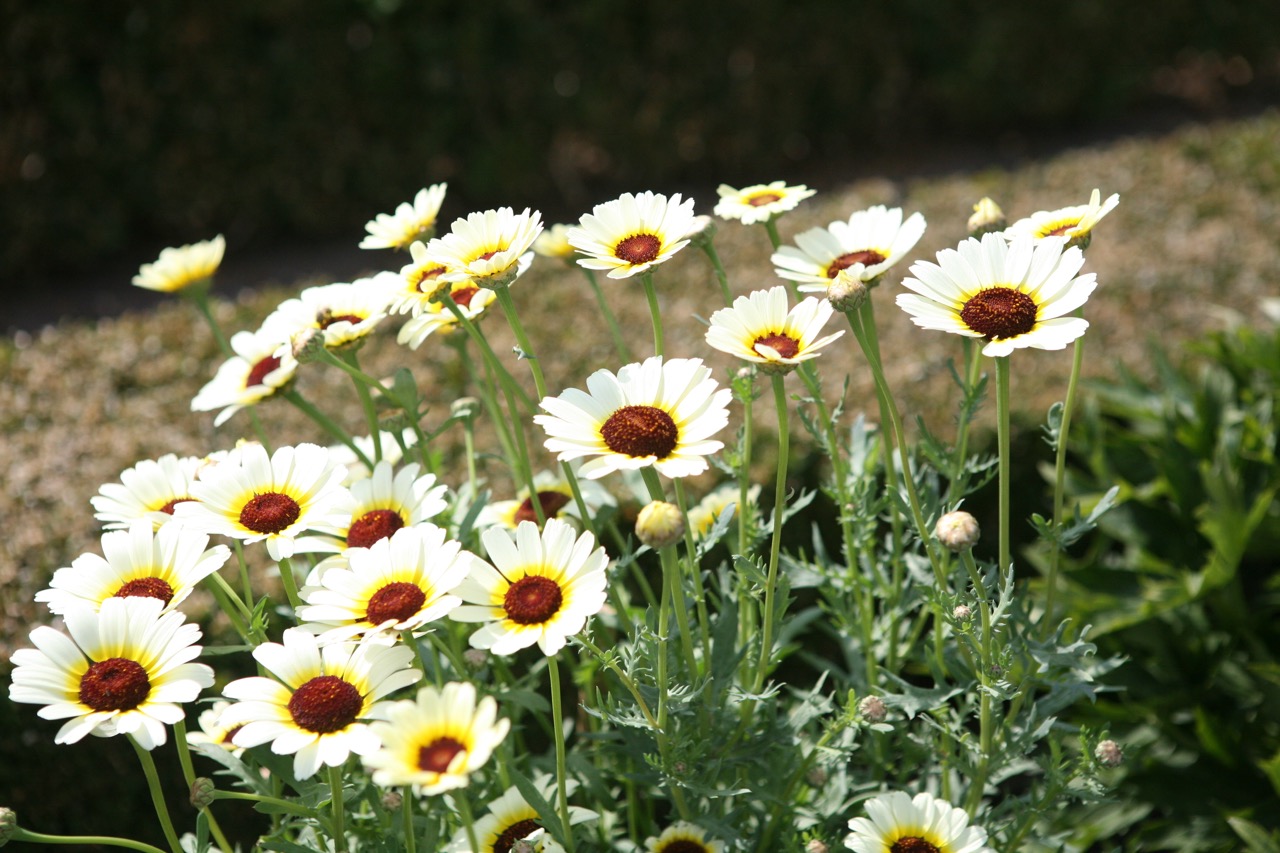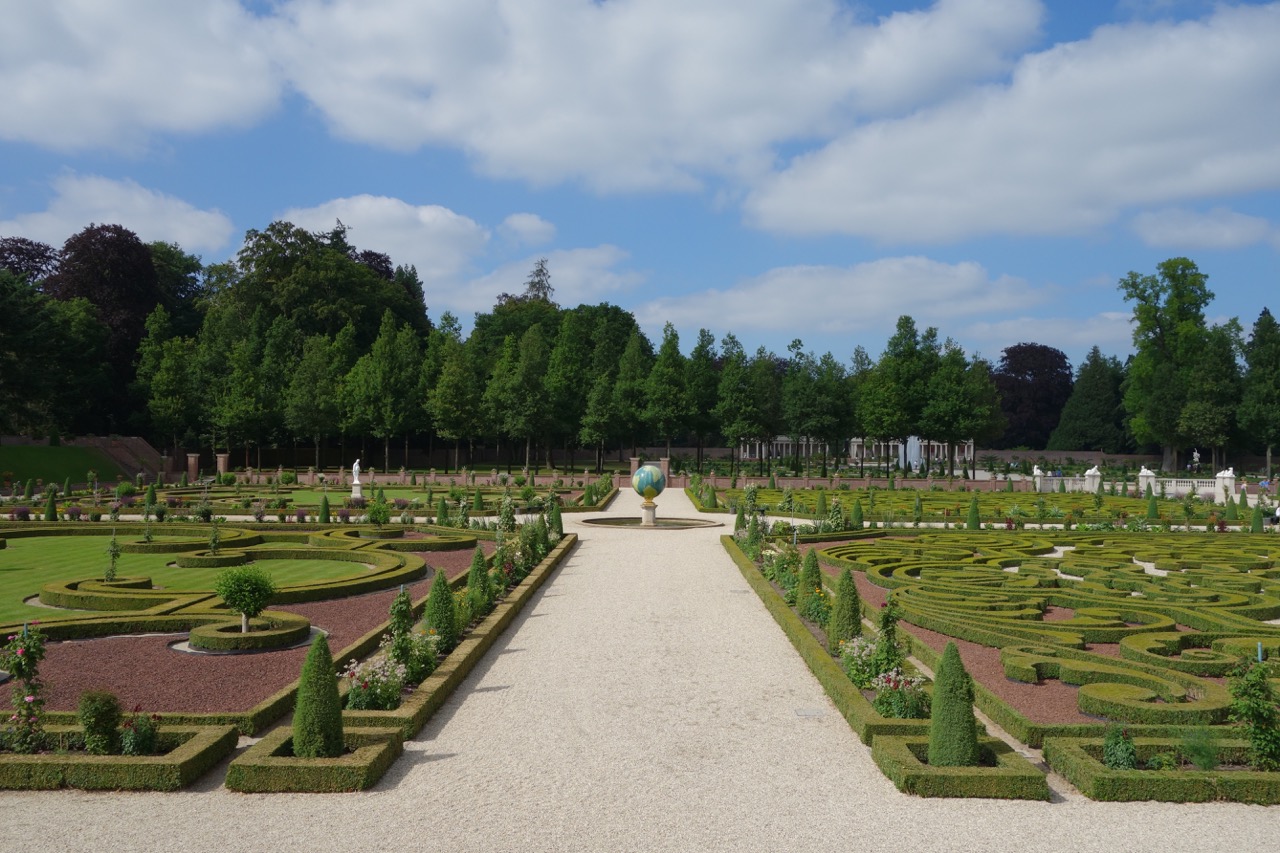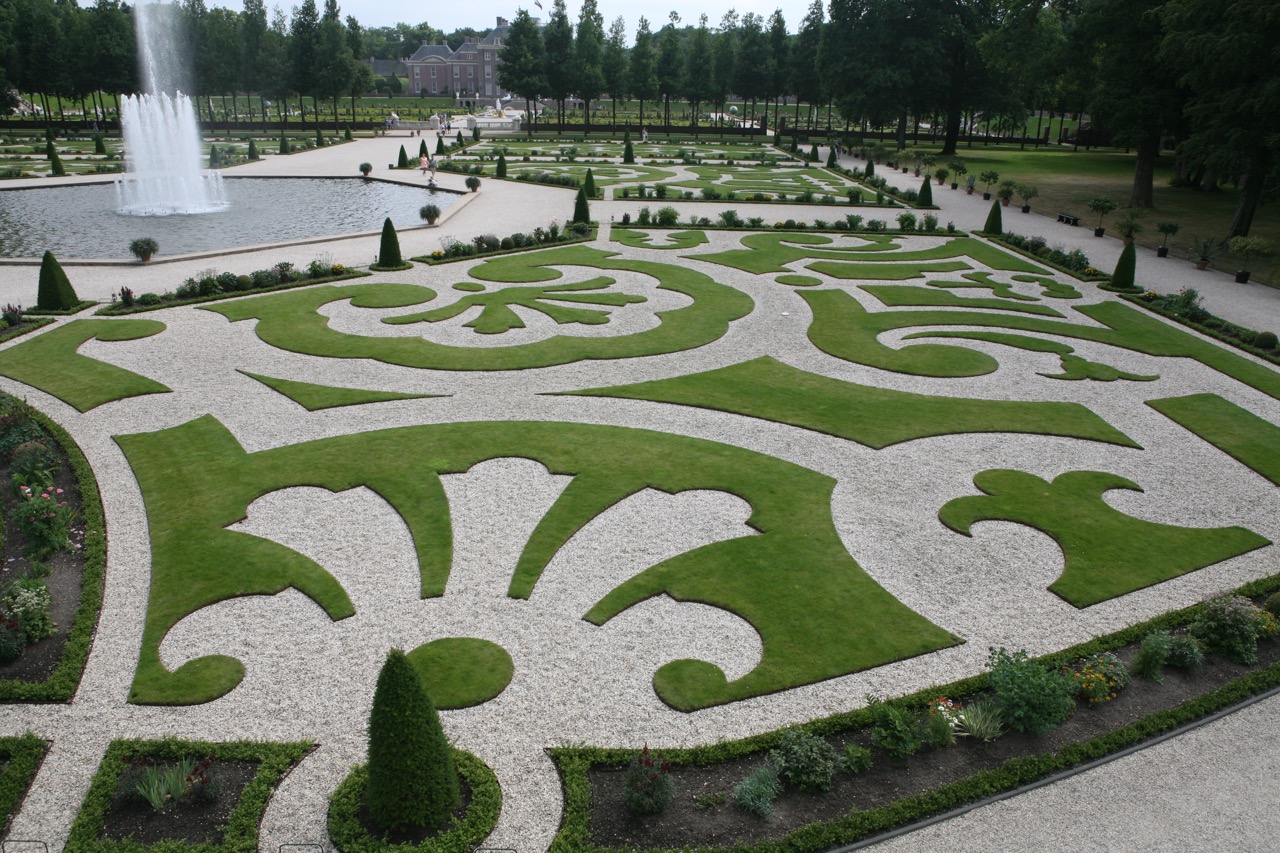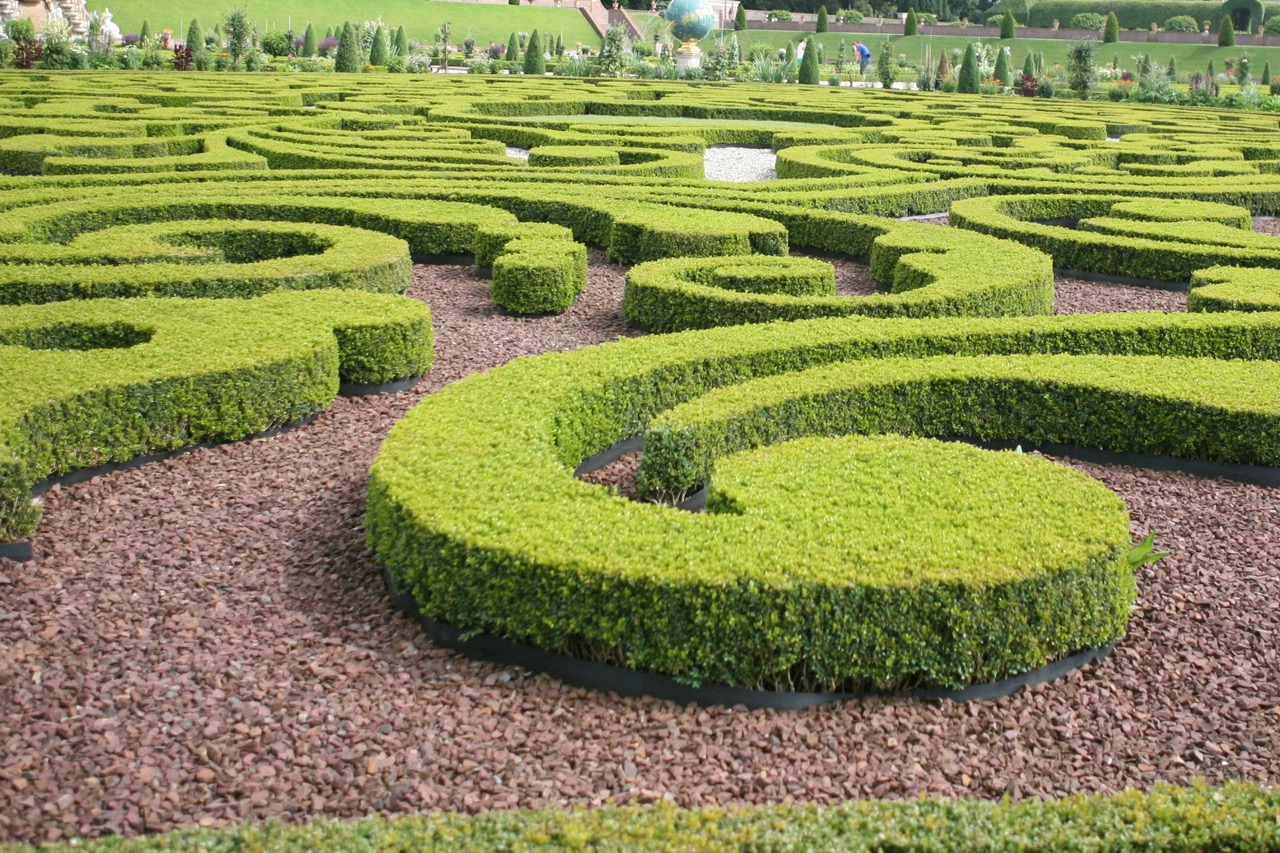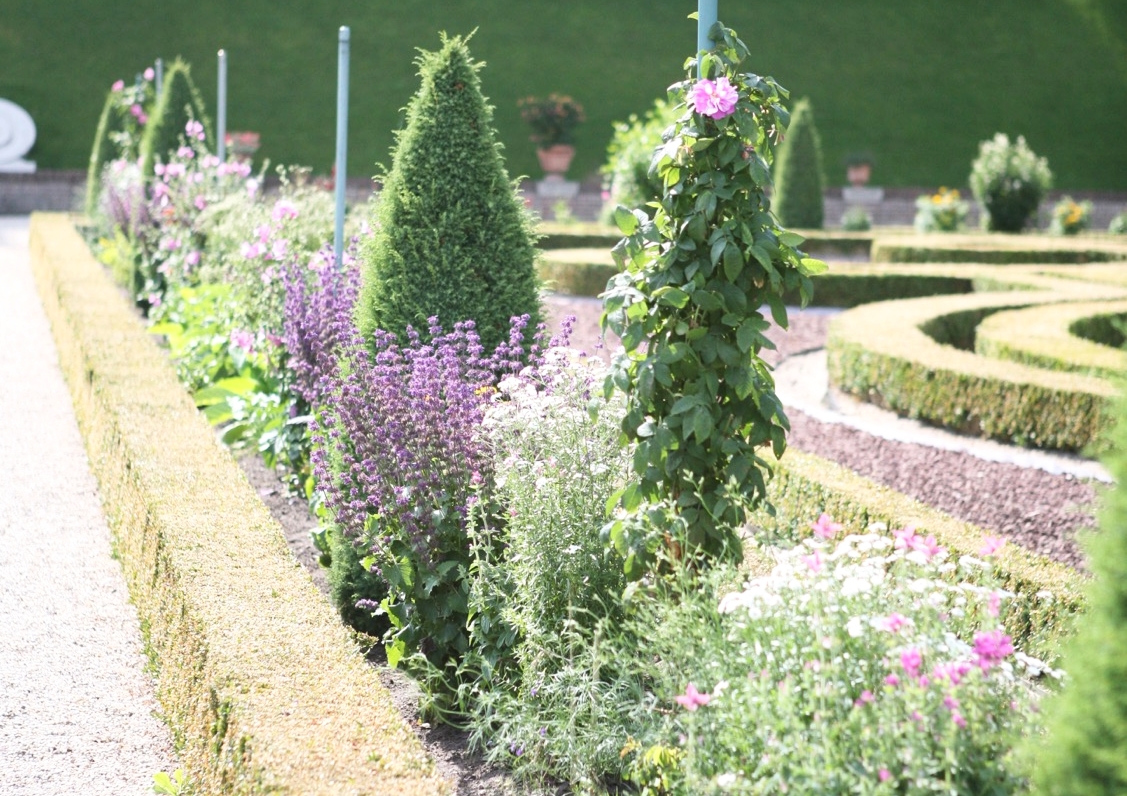My first visit to the fabulous gardens at Het Loo occurred during a snow storm. While the weather slowed me down, the reward of freshly fallen snow on the intricate plantings was worth the “tram to train to another train to a bus” commute.
One of the radiating paths leading to the Palace as seen after a delightful winter storm. See more winter photos here.
When summer arrived, I couldn’t wait to visit the same garden in full bloom. In winter everything was covered up and resting. In summer I expected to see the place alive and thriving.
I wasn’t disappointed. Boxwood curves shine and hedges come alive with pops of colorful annuals and perennials. These include species that originally would have been brought in by the West and East India Companies for William and Mary. Flowering plants are spaced so that each can reach its full potential as if on display rather than as part of a composition. Juniper berry bush topiaries add height and interest.
The parterres were likely laid out by Christiaan Pieter van Staden in the 1680’s. His drawings of the garden are thought to be the oldest record of their design.
The parterre as designed by Christiaan Pieter van Staden. These drawings were used to restore the gardens.
The style of clipped hedges or turf designs is called a parterre broderie –designed to mimic embroidery. In 1722 Antoine-Joseph Dezallier d'Argenville offered advice to aspiring parterre designers in his book La Theorie et la Pratique du Jardinage. “The broderie of a parterre should be neither too heavy nor too light: good taste and experience should determine its correct proportions.”
If you are looking for ideas, he explains: “Parterres are composed of different motifs, such as foliated scrolls, fleurons, becs de corbin, tendrils, knots, naissances, feuilles de refend, compartments, volutes, chapelets, agrafes, ornamental seeds, palmettes, culs-de-lampe, dents-de-loup, attaches, guilloches, rouleaux, rosettes, trefoils, feathers, wells, grass borders, scallops, cartouches, flower beds, and paths.” How’s that for inspiration!
The structure of the parterre broderie keeps this garden looking good all year long – whether under a blanket of snow or at the height of summer.
I am thinking about where I can tuck one of these into my landscape. Just kidding!
The overall landscape was designed in the 1680’s in the French formal style by mathematician Daniel Marot. The garden features a central axis, radiating walks, and multiple water features.
Christiaan Pieter van Staden's drawing for Het Loo's upper and lower garden.


